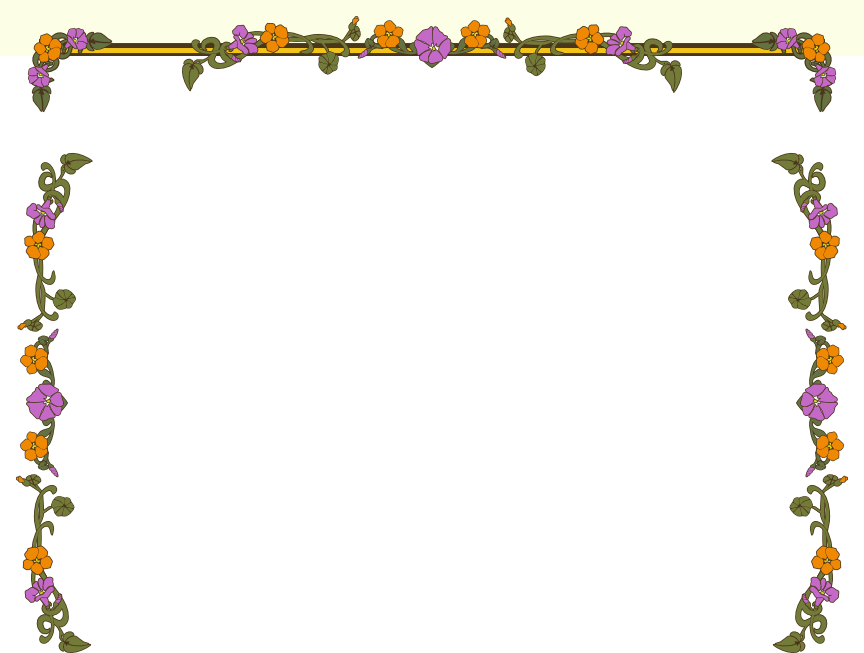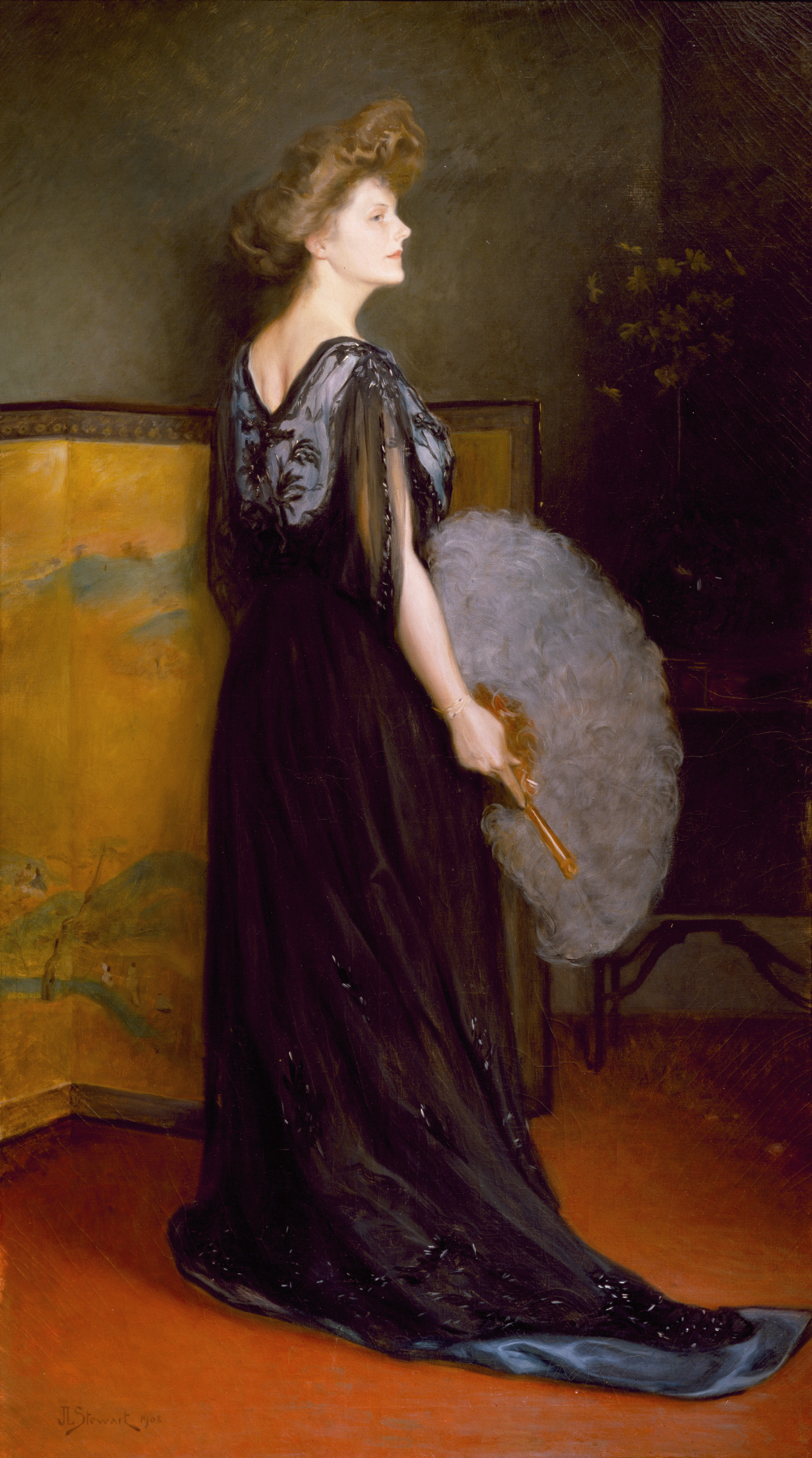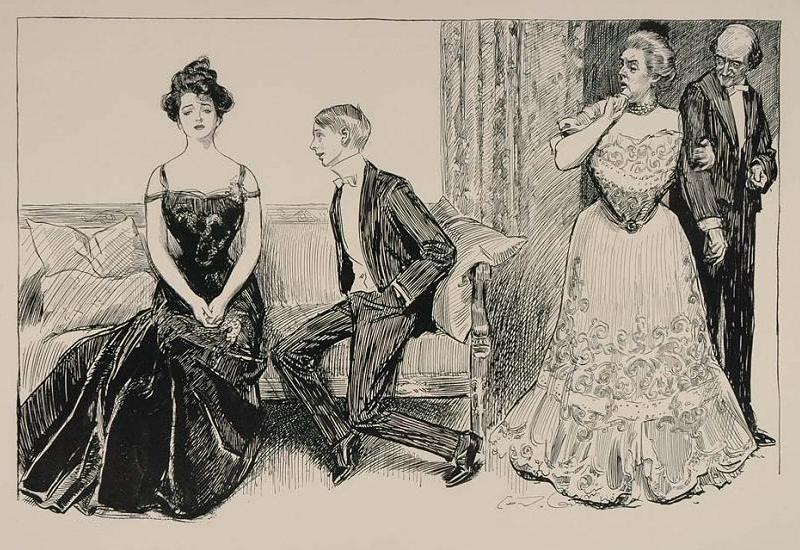



Theme
The bride and groom and their attendants will be dressed in clothing inspired by Edwardian society compatible with a summer daytime wedding. Our guests are not expected to dress up with us, but those who do will make a delightful contribution to the theme of the wedding.
Theme period: 1890-1915
The era was the Belle Epoque (beautiful epoch), which expressed many design elements of the Art Nouveau (new art) movement. Art Nouveau features gentle, natural, organic, and impressionistic design elements: sweeping lines, growing plants, lingering smoke, swirling water, oriental design, and soft textures. It was the first time that color printed material and decorated, mass-produced items were becoming affordable to the middle class.
Art Nouveau happened after the Victorian Age, which brought the Eiffel Tower to Paris and steamships to England, and Jules Verne's Captain Nemo. During the Belle Epoque, Paris began to lead the world in the concepts of fashionable designer clothing. For inspiration, look for photos or movies depicting popular stories set in this period of time: the Titanic disaster, Mary Poppins, Gibson Girls, the American Old West, or H.G. Wells' The War of the Worlds. The imaginary "Steampunk Era" is also inspired by this time period.
After Art Nouveau came periods too modern to be strictly in the wedding theme. The Art Deco and later Modern Art movements feature idealized, simplified, mechanical, square, and mathematical design. This design motif may be seen in the Chrysler Building (NYC), diners, the City of Oz from the 1934 MGM film, automobiles and a lot of classic American movie theater styling. Stories too late for the period include Gangs of Chicago, Metropolis (the Fritz Lang film), and The Great Gatsby.
Attire

Women's dresses early in the period emphasized wide busts, narrow waists and large behinds, trailing on the floor for all but practical daywear; hair was massed up and emphasized volume and trailing curls. Even sufragettes of the time dressed this way. Late in our period, the Greek-inspired columnar look which de-emphasized the hour-glass shape started to show up, and correspondingly, dress lengths rose to the ankle. Much too late for our period, these trends led to short dresses, speakeasies, libertines, and the 'flapper' era.
Men's attire didn't vary as much, and represents a variation on today's themes. Semi-formal dress in the US was called the stroller; it featured a somewhat relaxed suit assembling shirt with narrow necktie, notched jacket, waistcoat (vest) and suspenders, striped baggy pants and plain oxford shoes, likely topped with a hat, most likely a bowler or boater. Think of Laurel and Hardy or Indiana Jones' father.
The bride and groom's attire will be very formal for a summer daytime wedding, and their attendants will be semi-formal.

Katrina's Dress & Accessories
Katrina is sewing her own formal ball gown, suitable for a princess, consistent with the turn of the century:
- sleeves that puff out a bit over the shoulder,
- a bodice with hidden corset undergarment beneath (more Victorian instead of the unhealthy Edwardian style),
- skirt exaggerating her behind somewhat
- train spilling out onto the ground in a bell-shape in a spiral pattern
- drapy layers overlain with more sheer layers featuring lace and cutouts
- Purple, burgundy and related jewel tones
Katrina's accessories
- New shoes in an Edwardian style. Possibly brown, possibly colored to match the dress. I've ordered these, and they were only available in brown, which means that if I were to color them, I'd probably need to paint them rather than dye them. Doable, but I kind of wish I could have gotten the ivory.
- Unsure of gloves, perhaps satin dyed to match the dress, perhaps made from the dress lace.
- Some kind of head piece is necessary ... veils, hats, etc. Undecided.
Follow Katrina's dress sewing project at her blog, Wedding Dress Brainstorm
Groom's Attire
James is assembling his clothing around more formal men's morning dress:
- Morning coat in dark grey, with matching striped or checked trousers
- Fancy waistcoat (vest), disguising suspenders
- Stiffly starched shirt, single cuffs, detachable high wing collar and ascot
- Plain black Oxford ankle boots
- Silk tophat, gloves, and cane
- Red-orange, orange-yellow and related fire colors
Attendants
Katrina's two attendants are a man and a woman:
- Gary isn't saying much, but appears to be heading toward a brown stroller.
- Amber hasn't been specific about her plans, yet.
James' two attendants are women:
- Saqra has selected a practical black tailored women's day dress (think Mary Poppins) with white lace/granny boots - very turn of the century.
- Cathy is leaning toward the tall, columnar style of clothing trending toward 1915, think Sarah Bernhardt.
Resources
- 1900-1909 in Fashion - Overview of Fashion for Men and Women
- Women's Clothing from 1900 - Women's clothing elements from undergarments to accessories
- Dressing the Edwardian Man - Men's clothing overview
- Men's Clothing from 1900 - Men's clothing elements from undergarments to accessories
We are currently working on a list of resources for DIY ideas and shopping options.








